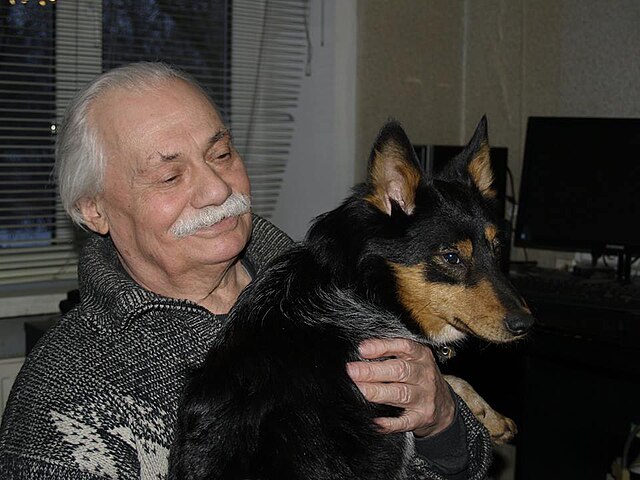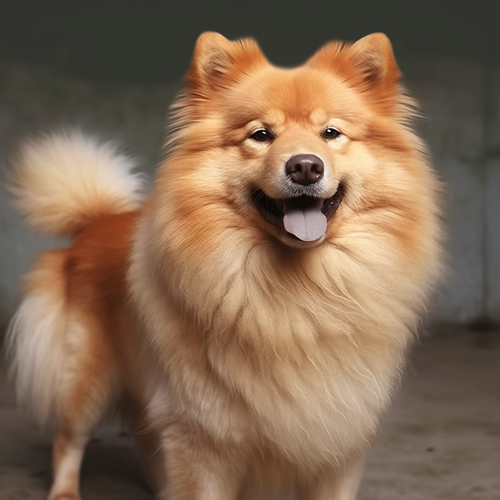The Canadian Eskimo Dog is an ancient breed, and certainly one of Canada’s oldest purebred dogs. This is a happy and enthusiastic breed which loves to work, play and explore – doing it all with plenty of vigor and hardiness. He particularly loves to be outside – and the colder, the better! Despite his robust frame and considerable strength he has the capabilities to be gentle and relaxed. With his human family he is a loyal, affectionate and courageous companion. He may be better in homes without small children because of his size, “zest for life”, and occasional resource guarding (an issue that should be addressed before it has a chance to begin).
The CED is an intelligent breed with a long memory. Once trained, he doesn’t tend to forget. Furthermore he is more submissive and also easier to train than many other spitz breeds of similar ancestry. However, don’t let these descriptions convince you that this is an “easy” dog. Being more primitive and more active than many breeds, this dog needs to be given lots of mental training tasks on a daily basis. He doesn’t just enjoy a job, but requires it! Furthermore this large and powerful dog may require someone just as physically fit as himself to work with him. Finally, in multi-dog households an owner should be experienced with managing pack dynamics and have exceptionally good leadership skills.
Canadian Eskimos need plenty of exercise and do best with owners who love outdoor adventures just as much as they do! For those that live in snowy climates and have several dogs, this is a great dog for mushing (sled pulling). If not – hiking, skijoring, bikejorring, canicross and/or weight pull are all great alternatives. The breed has plenty of stamina and needs long exercise sessions – at minimum two long walks a day, as well as mental exercise such as the dog sports listed above. A team of CEDs can cover 70 miles a day pulling a sled, and do so pulling at least twice their weight! It’s no wonder that they need more exercise than the average dog!
Some Canadian Eskimo Dogs have a high prey drive. This is because (besides pulling sleds) they were also used for hunting ox and polar bears. Some were also expected to scavenge and hunt for their own food. This makes many of them likely to take note of small “prey” animals running around, and be ready to race after it at a moment’s notice. As this is a powerful large breed, it is important for owners to train their dogs and keep them under control. A strong dog such as this runs the risk of pulling away to chase a running animal, leaving their owner behind! This is why it’s so vital to start training while young. In addition, the breed can be quite adept at escaping the yard to chase prey or go on adventures. Make sure your fence is dig-proof and climb-proof. 
The CED is a rare breed but is recognized in the United States by the UKC. Previously recognized by the AKC as well, they were dropped in the 50’s because of low numbers. Most individuals today reside in the Arctic regions and can be seen in sledding teams and in some “Arctic tourism” teams in which members of the public are offered sled rides. This said, sadly the breed is currently threatened with extinction. The low numbers are a partially a result of the invention of the snowmobile, which gave people another way to travel across the snow and essentially took away this dog’s primary job. Today, a number of people and organizations (such as the Eskimo Dog Research Foundation) are working toward increasing the numbers of this historical breed.
The coat of the Canadian Eskimo is very thick. This double coat does shed at least once a year (more in warmer temperatures) and needs to be brushed daily during shedding season. Otherwise he can be brushed/groomed once or twice a week. Without regular brushing, the coat can become very uncomfortable to the dog and can diminish his ability to regulate temperature, making him more prone to heatstroke. He comes in a rainbow of color possibilities, both solid colored as well as parti (with white), and can have a number of different markings on the body and face. This means that every member of this breed is an individual and can usually be picked out of a crowd of other CEDs fairly easily.
Canadian Eskimo Dogs are ever-alert to their surroundings and can be quite vocal when they spot something interesting. They don’t tend to bark like other dogs, instead they howl or sing. This may make some neighbors second-guess that the dog in your backyard is actually a dog… and cause concern that you are instead housing a wolf! This said, despite their extremely wolf-y appearance and voice, there is no wolf blood in this dog breed.



